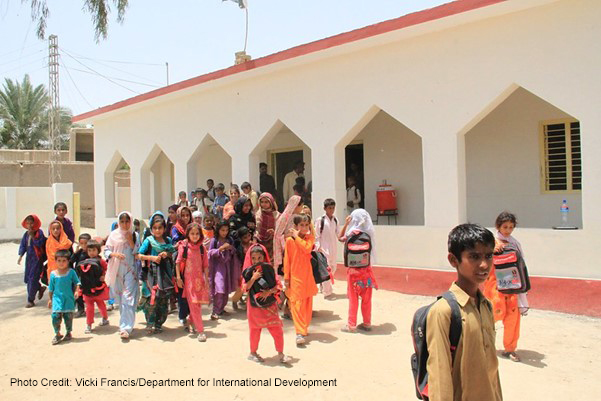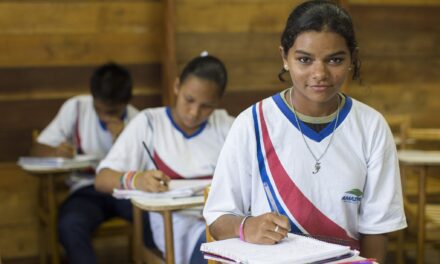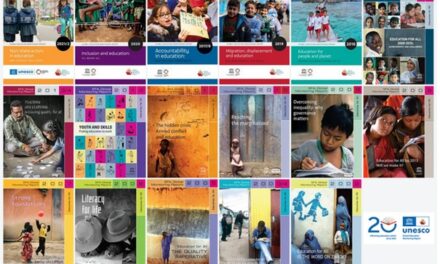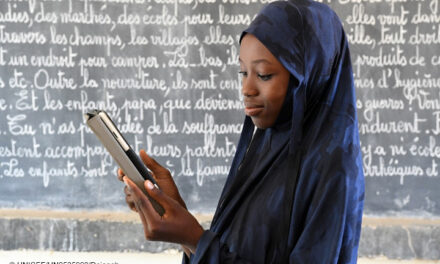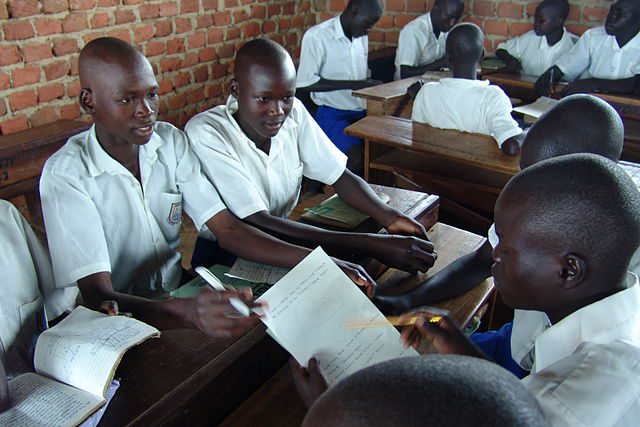This blog was written by Keith Lewin, Emeritus Professor of International Development and Education at the University of Sussex, and Chair of the UKFIET Trustees (2017-2020).
The latest 2021/22 Global Education Monitoring (GEM) Report is a must-read for those with an interest in sustainable education and development. It brings together in one place a thoughtful, comprehensive and critical collection of insights into how education systems have been evolving with respect to Non-State Providers (NSPs). It identifies “10 myths”, all of which bear close examination in relation to the belief systems and evidence that surround how education systems and learning are owned, managed and financed.
In the early 2000s, a growing body of literature created an echo chamber of expectations that low-price private schools would be mushrooming across the developing world. Hyperbole was used to assert that public schools would wither away as low-cost private schools displaced failing public systems, and neoliberal market theory demonstrated triumphantly that all that was necessary was to ‘get the prices right’.
In 2007, I argued that there were limits to growth of non-government schooling that addressed the needs of poorer households unless it was publicly financed. I engaged in several debates with those who saw no encumbrance to growth and argued that low price private schools would displace public systems. They offered dazzling visions of the sunny uplands of unlimited school choice for all rather than for the few, driven by unregulated markets with beneficial owners untrammelled by concerns for equity or social justice across generations. Twenty years on, there is plenty of empirical evidence to test most of the claims made against the unfolding reality. Unsubsidised NSPs can continue to provide schooling of quality to richer households but they have had limited impact on improving the educational access of the most marginalised or on their learning achievement. The GEM Report offers those with open minds an opportunity to draw their own conclusions from two decades of myth-busting data.
The mushrooming of NSPs has been very uneven across countries and over time. The GEM Report shows how provision by NSPs grew from 10% to 17% from 2002 to 2013 at primary level and from 19% to 26% at secondary level (or somewhat less if a correction is made for upward biases arising from a greater skew towards richer households in secondary enrolment). Since then, the growth has plateaued. Likely reasons for the stalled growth include falling rates of return that are no longer sufficient to tempt venture capital or motivate risk-averse small investors, saturation of effective demand linked to disposable household income, and limits to the number of entrepreneurs able to manage schools successfully. Most recently the exigencies of covid-19 have exposed the weaknesses of the business models of some NSPs and their lack of resilience.
The GEM Report notes that the countries that have been most successful at increasing enrolment rates have not depended on growth in low-cost private schools. NSPs have tended to recruit from those already enrolled rather than increase overall enrolment rates. Many systems with high enrolments have remained free of mushrooming NSPs. Long-standing analysis and recent data supports the rule of thumb that unsubsidised NSPs cannot consistently reach children much below the 20th percentile of household income with full-cost national curriculum secondary schooling, and much below the 40th percentile for primary schooling.
Simply put, those who understand the demography, income distribution, the size of the private sector in low- and low-middle income countries, and patterns of effective demand for NSPs can convincingly now demonstrate that:
- Charging fees to the 40% of households at or below the poverty level is both counterproductive (it increases the number in poverty), and obviously inequitable (it imposes a higher burden on the poor than the rich); it is also frequently associated with premature drop-out and high interest household debt.
- Fee-paying private schools are ten times more likely to be attended by the relatively rich and exclude the relatively poor, marginalise poor girls more than poor boys and are located in urban areas where disposable income is highest.
- The relative financial burden on households is more than twice as great in poor rather than rich countries, it is also born most heavily by those who attend NSPs rather than publicly financed schools.
- Disappointingly it turns out that public schools are often not free, with a third of all costs to households arising from attendance in public schools.
- As countries get richer, it is more likely that direct costs to households fall, relative to GDP per capita. Unfortunately, the opposite also tends to be true, suggesting a growth strategy based on NSPs may be fundamentally inequitable and counter-factual.
- School choice is only available to those who have the financial resources to exercise that choice. Second best proxies that are supposed to empower households (e.g. vouchers, cash transfers) have conspicuously failed to become the education financing modality of choice for most governments.
- Low-price schooling depends on low-cost teachers who lack teaching qualifications, contracts of employment or meaningful career development pathways; they often work part time, may be paid on a piecework basis, and can earn as little as one eighth of a fully-qualified government teacher.
- NSPs often market themselves as maximising results on high stakes selection examinations; if controls for selective entry are used, performance advantages tend to reduce or disappear.
- There is limited evidence that many low-cost NSPs adopt innovative pedagogy rather than use conventional whole-class teaching, recall based drilling, examination cramming, high levels of time on task, and powerfully didactic pedagogies – a kind of alignment often thought educationally limiting.
- Shadow systems of “second chance” NSP schools that provide private tuition to those taking examinations or retaking after failure to pass, add considerably to costs to households and more may be spent on private tuition than on school fees.
- Unsubsidised schools generally do not enrol out-of-school children in quantity as they have no independent means of supporting the costs. These are likely to be higher than regular school enrolment as a result of multiple deprivations.
- NSPs may compete for a limited pool of children who can afford fee payments, and patterns of demand are sensitive to short-term fluctuations leading to volatile patterns of enrolment and high rates of school transfer.
- Systemic risk increases as the proportion of enrolments in NSPs increases; publicly-financed systems remain the providers of last resort and the destination of children when private providers fail
- Covid-19 has demonstrated the vulnerabilities of NSPs with business models that lack resilience and carry no public liability insurances.
At least 6% of GDP is needed to finance universal rights to education. This depends on government expenditure approaching 25% of GDP and at least 25% of that (25% of 25% = 6.25% of GDP) being allocated to education with a bias towards funding mass participation. The current average is about 4% of GDP. The GEM Report shows that increasingly, the costs of education are falling on households as states consistently fall short of pledges to allocate 6% of GDP. Aid cannot fill the gap. The only sustainable solution is to encourage fiscal states to generate more domestic revenue and invest it in more equitable service delivery.
Some advocates have assumed NSPs can deliver outcomes at system level and take on system responsibilities with few limits to their reach. The historic record is clear. This is not a reasonable expectation or a likely scenario that can or will be financed from non-government sources. If it was, it would already have happened.
Only governments (national or local) can take on responsibilities for delivering rights to education to all, irrespective of social group and household income. Only governments have the capacity to finance public goods like mass access to education at different levels. Only governments can provide financing of recurrent costs from revenue generation that does not depend on grant aid or unsustainable debt. The limits to growth of NSPs’ reach and responsibilities are determined in the large part by the basic arithmetic of demography, income distribution, expenditure preferences of households and governments, and the costs of employing teachers and organising learning.
The GEM Report 2021/22 pointedly asks “who chooses, who loses”. The metaphors around winners and losers conjure up the algorithms of a zero sum game where the motive for choice is to gain an advantage, e.g. access to a high-performing school, or, even more powerfully in choice theory, avoid a disadvantage (e.g. attending a low-performing school). Constructing discussion of educational provision around the role of NSPs in enlarging choice may reveal more about the choosers than it does about the losers whose voice is rarely heard.
If public goods matter for development there surely must be a better way forward. One that reduces the consequences of school choice across systems and seeks and celebrates convergences. NSPs not financed with public revenues should contribute to greater equity rather than be associated with new asymmetries in access, progression and achievement. The limits to their growth need understanding alongside their interaction with the publicly-financed systems that are the only means of delivering rights to education for all. Time needs to be called on the pursuit of the zero sum educational game with a few winners and many more losers. Otherwise the choosers the GEM Report identifies may end up identifying the losers as well as the winners.
More contributions on the subject of NSPs are available on Keith Lewin’s website. These include a background briefing note for GEMR 2021/22 and several papers including The limits to growth of non-government private schooling in Sub-Saharan Africa. CREATE Pathways to Access No 5, June 2007.

